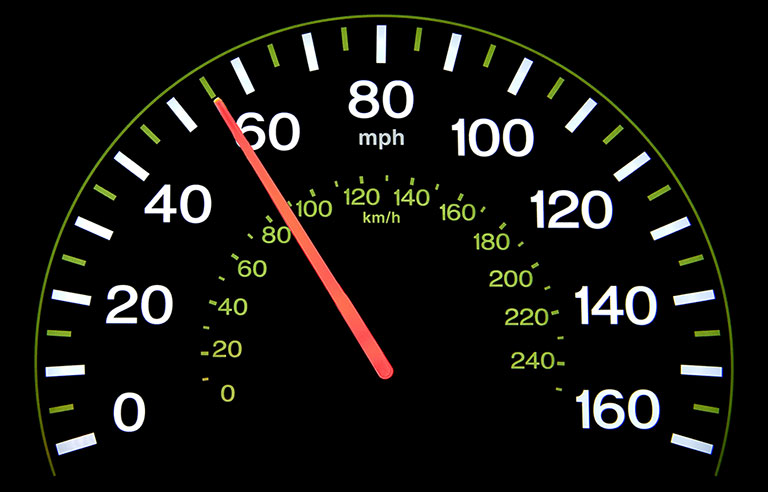Sometimes drivers have a need for speed, and the opportunity to press the pedal to metal presents itself. In Germany, autobahns live in infamy among some drivers.
Laws allow drivers to reach 80 mph. However, they can peel off in the de-restricted sections. Therefore, some drivers test their driving and vehicle limits by throwing caution to the wind.
In the United States, de-restricted autobahn environments do not exist on public roads or highways. The country features stretches of valley roads, but even there, highway patrol pulls over speeders without warning.
Speeding is tempting, and every day some drivers take chances. Traveling over the speed limit presents several dangers to drivers and others, including needing to hire legal representation after a collision.
Let’s look at five dangers of speeding and how to avoid it.
Dangers of Speeding
Speeding can provide thrills for some individuals, and spaces for them exist. On public roads, it endangers the public in the following ways.
1. Breaking the Law
The state and local authorities oversee speed limits in their jurisdictions. Professionals study traffic patterns, vehicle capabilities, and weather to establish the safest speeds per condition.
Breaking the law is the first danger of speeding. The fines range between $300 to $400 depending on location, speed over the limit, and the number of previous driving offenses.
Drivers who break driving laws frequently will face license suspension and fines.
2. Less Vehicle Control
Authorities base speed limits on vehicle stopping times. In residential areas and school zones, pedestrians walk around and expect drivers to share the road.
Thus, drivers cannot speed in these zones. Drivers need more runway to arrive at a complete stop in these zones. Plus, they might not stop in time to prevent crashing into children.
Moreover, faster speeds can cause drivers to lose control of their vehicles, especially when attempting to stop suddenly. Therefore, collisions can become more deadly and violent.
3. Longer Stopping Time
Vehicle manufacturers advertise the stopping abilities of some makes and models. However, it’s not a guarantee or reason to continually test the limits of cars, even feats of engineering.
Several factors play a role in stopping time, including:
- Weather
- Road conditions
- Vehicle maintenance
- Tire conditions
- Driver abilities
Drivers who decide to speed might not stop quickly enough to prevent an accident. Therefore, it’s best to avoid the situation.
4. More Violent Crashes
The data shows that collisions at higher speeds have more violent results. The impact of crashing into a pole differs at 30 mph differs from ramming into it at 60 mph.
Drivers will experience the impact of the collision at both speeds. However, they can survive at 30 mph but not necessarily at 60 mph.
Moreover, drivers who hit pedestrians and other vehicles at higher speeds risk the lives of everyone involved. For example, drivers who hit children with a car at 60 mph might put them in comas or worse.
In addition, drivers can paralyze themselves.
5. Greater Vehicle Wear and Tear
In addition, speeding creates more significant vehicle wear and tear. Vehicles remain incredible feats of engineering. However, their parts and mechanisms wear out – that’s why owners must take them for regular maintenance.
Speeding will wear out the engine, breaks, and related components faster since coming to a complete stop forces the vehicle to work harder.
How to Avoid Speeding
Sometimes it’s tempting to speed when the road is open. Other times, people run late and attempt to beat the clock. Avoid speeding by following the following three tips.
1. Understand Why You Start Speeding
First, understand why you start speeding. Are you running late? Are you in the right mood to drive? Do you feel tense or nervous?
Taking a step back and assessing your lack of respect for the road can stop you from speeding.
2. Check the Speedometer
Next, check the speedometer every so often.
Some drivers don’t realize when they start pressing on the gas too hard. The speedometer is a great reality check.
3. Allot Enough Time for Travel
Lastly, allot enough time for travel. Weaving in and out of traffic doesn’t always result in arriving at the destination faster.
Drivers who feel the need to speed should give themselves more time to travel.
Conclusion
Drivers who have the need for speed can travel to places that help them fulfill it away from public roads, traffic, and pedestrians. Speeding creates several dangers and reasons why local authorities regulate it in the first place. Stop speeding by understanding the tendency and respecting others.
